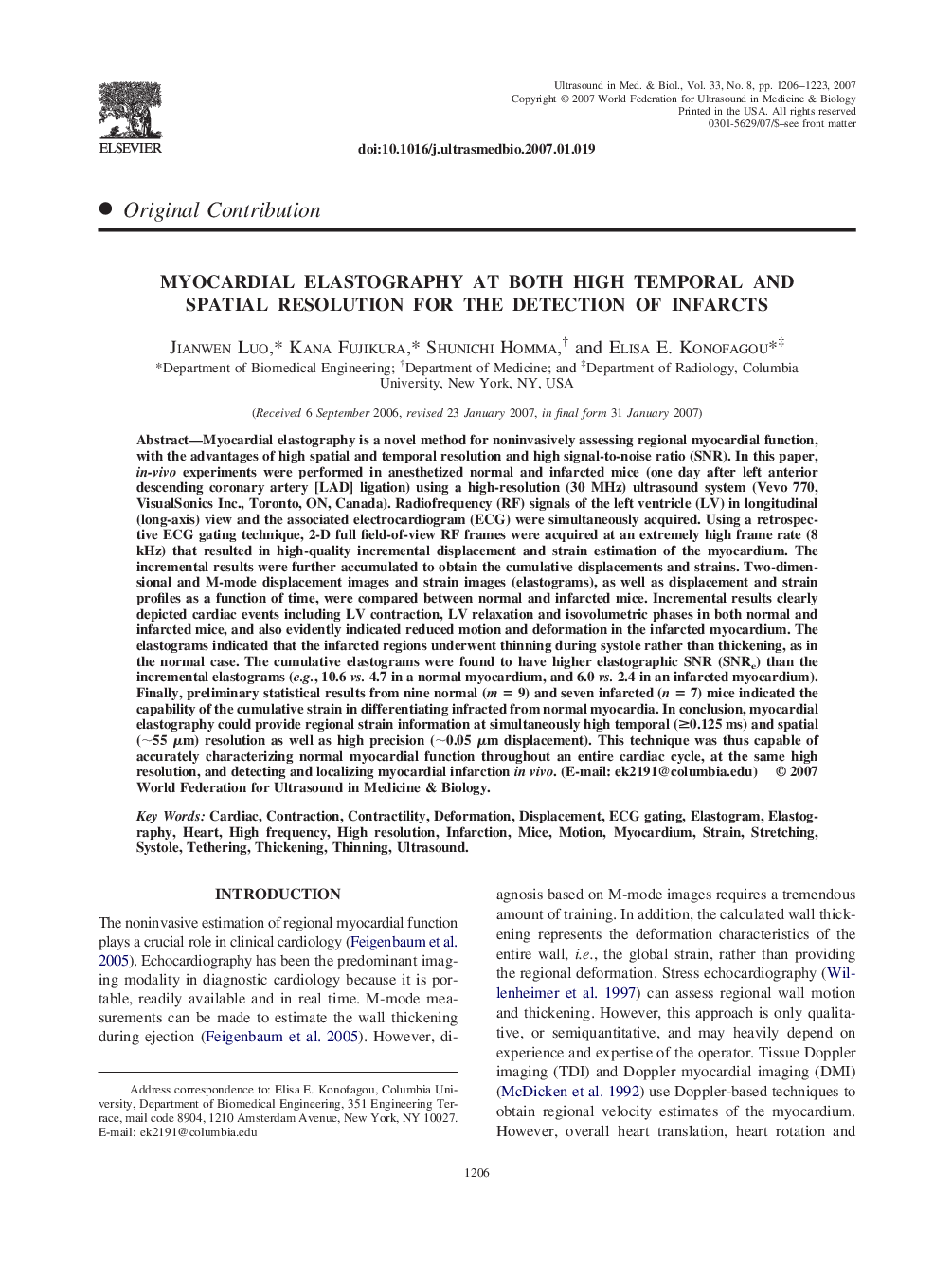| کد مقاله | کد نشریه | سال انتشار | مقاله انگلیسی | نسخه تمام متن |
|---|---|---|---|---|
| 1762755 | 1019714 | 2007 | 18 صفحه PDF | دانلود رایگان |
عنوان انگلیسی مقاله ISI
Myocardial Elastography at Both High Temporal and Spatial Resolution for the Detection of Infarcts
دانلود مقاله + سفارش ترجمه
دانلود مقاله ISI انگلیسی
رایگان برای ایرانیان
کلمات کلیدی
ECG gatingDeformation - تغییر شکلContraction - اختصارElastogram - الاستوگرافیElastography - الستوگرافیInfarction - انفارکتوسContractility - انقباضTethering - تطبیقDisplacement - جابه جاییMotion - حرکت Systole - سیستولThickening - ضخیم شدنUltrasound - فراصوتhigh frequency - فرکانس بالاHeart - قلب Cardiac - قلبMice - موشMyocardium - میوکارد Thinning - نازک شدنStrain - نژادStretching - کششhigh resolution - کیفیت بالا
موضوعات مرتبط
مهندسی و علوم پایه
فیزیک و نجوم
آکوستیک و فرا صوت
پیش نمایش صفحه اول مقاله

چکیده انگلیسی
Myocardial elastography is a novel method for noninvasively assessing regional myocardial function, with the advantages of high spatial and temporal resolution and high signal-to-noise ratio (SNR). In this paper, in-vivo experiments were performed in anesthetized normal and infarcted mice (one day after left anterior descending coronary artery [LAD] ligation) using a high-resolution (30 MHz) ultrasound system (Vevo 770, VisualSonics Inc., Toronto, ON, Canada). Radiofrequency (RF) signals of the left ventricle (LV) in longitudinal (long-axis) view and the associated electrocardiogram (ECG) were simultaneously acquired. Using a retrospective ECG gating technique, 2-D full field-of-view RF frames were acquired at an extremely high frame rate (8 kHz) that resulted in high-quality incremental displacement and strain estimation of the myocardium. The incremental results were further accumulated to obtain the cumulative displacements and strains. Two-dimensional and M-mode displacement images and strain images (elastograms), as well as displacement and strain profiles as a function of time, were compared between normal and infarcted mice. Incremental results clearly depicted cardiac events including LV contraction, LV relaxation and isovolumetric phases in both normal and infarcted mice, and also evidently indicated reduced motion and deformation in the infarcted myocardium. The elastograms indicated that the infarcted regions underwent thinning during systole rather than thickening, as in the normal case. The cumulative elastograms were found to have higher elastographic SNR (SNRe) than the incremental elastograms (e.g., 10.6 vs. 4.7 in a normal myocardium, and 6.0 vs. 2.4 in an infarcted myocardium). Finally, preliminary statistical results from nine normal (m = 9) and seven infarcted (n = 7) mice indicated the capability of the cumulative strain in differentiating infracted from normal myocardia. In conclusion, myocardial elastography could provide regional strain information at simultaneously high temporal (â¥0.125 ms) and spatial (â¼55 μm) resolution as well as high precision (â¼0.05 μm displacement). This technique was thus capable of accurately characterizing normal myocardial function throughout an entire cardiac cycle, at the same high resolution, and detecting and localizing myocardial infarction in vivo. (E-mail: ek2191@columbia.edu)
ناشر
Database: Elsevier - ScienceDirect (ساینس دایرکت)
Journal: Ultrasound in Medicine & Biology - Volume 33, Issue 8, August 2007, Pages 1206-1223
Journal: Ultrasound in Medicine & Biology - Volume 33, Issue 8, August 2007, Pages 1206-1223
نویسندگان
Jianwen Luo, Kana Fujikura, Shunichi Homma, Elisa E. Konofagou,